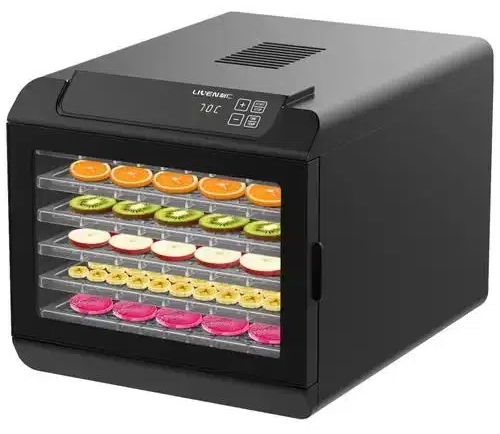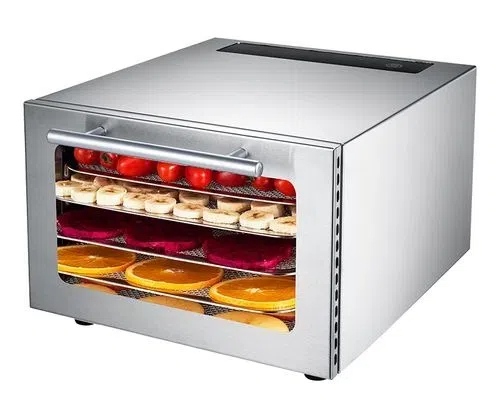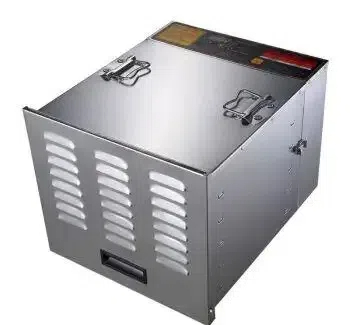
Content Menu
● Introduction
● Understanding Food Drying
● Types of Food Dryers
>> Electric Dehydrators
>> Solar Dehydrators
>> Microwave Dehydrators
● Choosing the Right Food Dryer
● How to Use a Food Dryer
● Recipes and Ideas for Dehydrated Foods
● Maintaining Your Food Dryer
● Conclusion
● FAQs
>> 1. What foods can be dehydrated?
>> 2. How long does it take to dehydrate food?
>> 3. Can I dehydrate meat safely?
>> 4. What is the best temperature for dehydrating food?
>> 5. How do I store dehydrated food?
Introduction
Food drying is an ancient preservation method that has gained renewed popularity in recent years. With the rise of health-conscious eating and the desire for sustainable food practices, many people are turning to food dehydrators to create healthy snacks and preserve seasonal produce. This article will explore the ins and outs of food drying, the types of food dryers available, and how to effectively use them to enhance your culinary repertoire.

Understanding Food Drying
Food drying is the process of removing moisture from food to inhibit the growth of bacteria, yeasts, and molds. By reducing the water content, food can be preserved for longer periods without refrigeration. The benefits of dehydrating food include:
1. Nutritional Retention: Dehydrated foods retain most of their nutrients, making them a healthy snack option.
2. Convenience: Dried foods are lightweight and easy to store, making them perfect for camping or travel.
3. Flavor Concentration: The drying process intensifies the flavors of fruits and vegetables, creating delicious snacks.
Types of Food Dryers
There are several types of food dryers available on the market, each with its unique features:
Electric Dehydrators
These are the most common type and come with multiple trays for drying various foods simultaneously. They often have adjustable temperature settings and timers for convenience.
Solar Dehydrators
Ideal for those who want to harness the power of the sun, solar dehydrators are eco-friendly and can be used outdoors. However, they require sunny weather and may take longer to dry food.
Microwave Dehydrators
These are compact and can quickly dehydrate small batches of food. However, they may not be suitable for larger quantities.
Choosing the Right Food Dryer
When selecting a food dryer, consider the following factors:
1. Capacity: Choose a model that fits your needs. Larger families or those who plan to dehydrate in bulk may require a unit with more trays.
2. Energy Efficiency: Look for dehydrators that consume less energy, especially if you plan to use them frequently.
3. Ease of Use: Opt for models with user-friendly controls and easy-to-clean components.

How to Use a Food Dryer
Using a food dehydrator is straightforward. Here’s a step-by-step guide:
1. Prepare the Food: Wash and slice fruits or vegetables evenly to ensure uniform drying.
2. Pre-Treat if Necessary: Some foods, like apples, may benefit from a quick soak in lemon juice or a saltwater solution to prevent browning.
3. Arrange on Trays: Place the prepared food on the dehydrator trays, ensuring they are not overlapping.
4. Set the Temperature: Adjust the temperature according to the type of food being dried. Most fruits dry well at 135°F (57°C), while vegetables may require higher temperatures.
5. Monitor the Process: Check the food periodically to ensure it is drying evenly. Rotate trays if necessary.
6. Store Properly: Once dried, let the food cool before storing it in airtight containers to maintain freshness.
Recipes and Ideas for Dehydrated Foods
Dehydrated foods can be used in various recipes. Here are some popular options:
1. Fruit Leather: Blend fruits like strawberries or mangoes, spread the puree on a dehydrator tray, and dry until pliable.
2. Vegetable Chips: Slice vegetables like zucchini or sweet potatoes thinly, season, and dehydrate for a crunchy snack.
3. Jerky: Marinate strips of meat in your favorite seasoning and dehydrate for a protein-packed snack.
Maintaining Your Food Dryer
To ensure your food dryer lasts for years, follow these maintenance tips:
1. Clean After Each Use: Wipe down trays and the dehydrator body to remove any food residue.
2. Check for Damage: Regularly inspect the heating element and fan for any signs of wear.
3. Store Properly: Keep the dehydrator in a dry place when not in use to prevent moisture buildup.
Conclusion
Food drying is a valuable skill that not only helps preserve food but also allows for creative culinary exploration. With the right food dryer and techniques, you can enjoy healthy snacks and reduce food waste. Whether you’re a beginner or an experienced dehydrator, the benefits of this method are undeniable.

FAQs
1. What foods can be dehydrated?
Most fruits, vegetables, herbs, and meats can be dehydrated. However, some foods, like dairy and high-fat items, are not suitable for dehydration.
2. How long does it take to dehydrate food?
Dehydration times vary based on the type of food and thickness of slices. Generally, fruits take 6-12 hours, while vegetables may take 4-10 hours.
3. Can I dehydrate meat safely?
Yes, but it’s essential to marinate and pre-cook the meat to eliminate harmful bacteria before dehydrating.
4. What is the best temperature for dehydrating food?
Fruits typically dehydrate well at 135°F (57°C), while vegetables may require temperatures between 125°F (52°C) and 145°F (63°C).
5. How do I store dehydrated food?
Store dehydrated food in airtight containers in a cool, dark place. Vacuum sealing can extend shelf life significantly.












